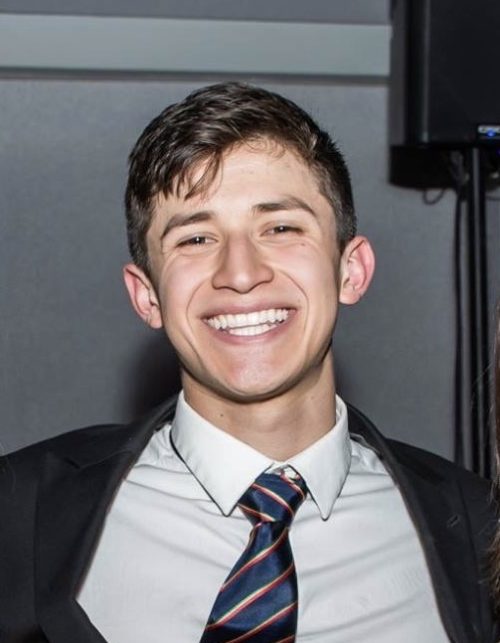Menu
ESI Stories
Student Sustainability Journeys: Alejandro Diaz
by Elizabeth Gribkoff
ESI launched the Minor in Environment & Sustainability in 2018, which means we now have the pleasure of seeing our first cohorts of graduates go out into the world. As they depart MIT, we’re interviewing them to understand what worked and didn’t work in their sustainability careers on campus.
Like many MIT electrical engineering students, Alejandro Diaz spent a lot of time as a kid playing with circuits and trying to make his own electronics. But he also grew up backpacking and camping with his family in the northern California mountains. This early love of the outdoors instilled in him an appreciation for the environment that has directed his path at MIT.
During his first year in college, Diaz took part in the MIT Outing Club’s “winter school,” which teaches students how to safely enjoy winter sports like cross-country skiing and mountaineering. Through MITOC, Diaz met fellow students who were passionate about sustainability and decided to enroll in 21W.775 Writing about Nature and Environmental Issues. “After taking a few more environment-related classes, I realized that probably where I want to end up career-wise is combining electrical engineering and computer science with sustainability,” says Diaz.
 Diaz wasted no time testing that theory out. The summer after his freshman year, he took an internship in Brazil with renewable energy company Iberdola. He helped design a new wind farm and even delivered a 40-minute presentation to the head of the company on the state of Brazilian wind energy—putting to use the Portuguese classes he signed up for as soon as he came to MIT. “I got to learn a lot about the energy infrastructure in Brazil, and how it’s all an interconnected system,” he says.
Diaz wasted no time testing that theory out. The summer after his freshman year, he took an internship in Brazil with renewable energy company Iberdola. He helped design a new wind farm and even delivered a 40-minute presentation to the head of the company on the state of Brazilian wind energy—putting to use the Portuguese classes he signed up for as soon as he came to MIT. “I got to learn a lot about the energy infrastructure in Brazil, and how it’s all an interconnected system,” he says.
Diaz has also worked as an undergraduate researcher in MIT’s D-Lab with Dr. Eric Verploegen, who designs off-the-grid refrigeration systems in shipping containers. The coolers contain solar-powered fans that force air over a series of wet pads, making the inside of the insulated shipping containers more humid and cooler, an energy-efficient way to preserve food where electricity is scarce. Dr. Verploegen says that while in the lab, Diaz “takes initiative to learn new skills” while bringing a “positive attitude towards problem solving.”
Throughout his time at MIT, Diaz has been drawn to classes and research opportunities that allow him to solve environmental challenges as part of a team. “I think always what it comes down to for me is the people and the relationships I’ve made,” he says. “Everyone has a drive to do a specific thing, and it’s really cool being able to share that and collaborate on different projects.” For that reason, one of his favorite classes was EC.719 D-Lab: Water, Climate Change, and Health with Prof. Susan Murcott. Diaz and other students developed a climate clock that shows how much time remains until the “carbon budget,” the total amount of carbon dioxide we can emit to avoid the worst impacts of climate change, runs out.
Diaz, a rock climber, has also been involved with MIT’s Outing Club as a trip leader. His passion for climbing led him to take 12.001 Introduction to Geology, where the enthusiastic professors and field trips to local rock formations made it a memorable class. “MIT has such a wealth of classes that I think a lot of people don’t necessarily know about,” says Diaz, whose love of Hispanic Literature inspired him to minor in Latin American and Latinx Studies. He suggests that students take classes outside of their major to see where their interests might lead them.
Diaz feels that MIT has an obligation to not just work on coming up with new technology to solve the climate crisis, but also to engage with policymakers to better implement solutions that already exist. “I think that’s where a major push has to be,” he says. Leading by example, he has worked on MIT’s next Climate Action Plan, sitting on the plan’s advisory committee as the representative for the Student Sustainability Coalition.
Now, Diaz is pursuing a Master’s in Electrical Engineering and Computer Science focused on artificial intelligence at MIT. After finishing his undergraduate degree a semester early, he felt he still had more to learn at MIT—and was especially reluctant to move on with all the job market uncertainty from the pandemic. While he has not yet chosen a lab to work in, Diaz plans to continue doing research that allows him to “combine electrical engineering…with working on an environmental problem.”















